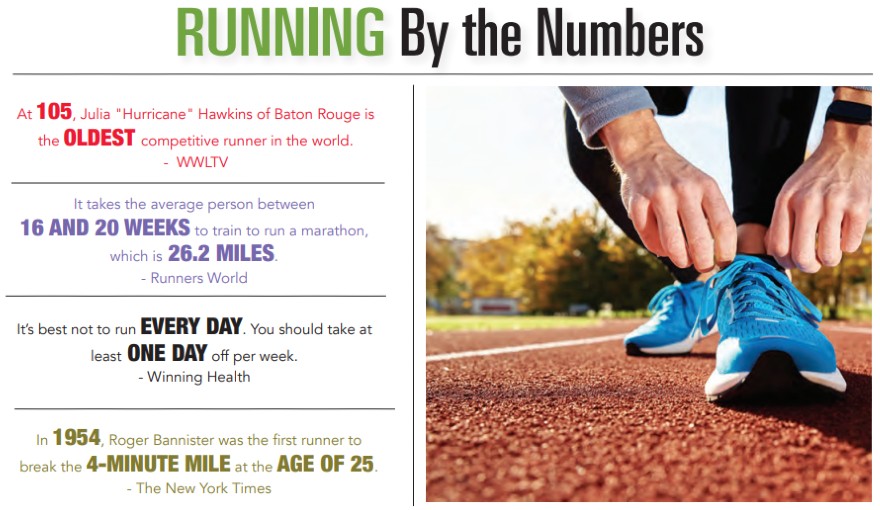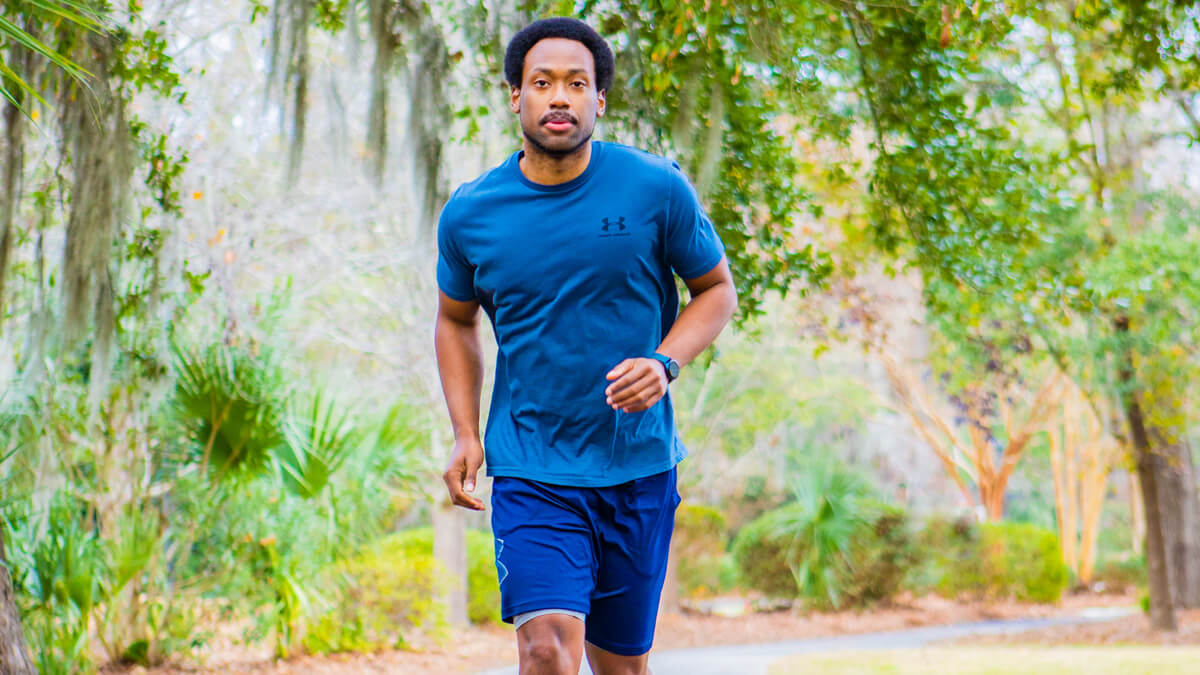Running is a great way to stay in shape as you age; it’s one of the best things you can do for your cardiovascular health. In fact, runners lower their chances of dying from heart disease by half. And hitting the pavement improves longevity. One study found that runners had a 30% lower rate of all causes of mortality than nonrunners – not to mention that running improves your sleep quality and overall mood. Regular exercise is the easiest way to sleep longer and harder once your head hits the pillow.
Still, running also is an impact sport and many fear that injuries such as knee and back problems will creep in with age. However, according to Dr. Jana Upshaw, a board-certified sports medicine physician at Winning Health in Charleston, while a number of injuries and afflictions tend to affect aging athletes, that shouldn’t be a reason to stop working out.
Dr. Upshaw has a special place in her heart for runners because she ran track and cross country in college and is still an avid runner today.
In terms of running injuries and ailments, Dr. Upshaw said osteoarthritis, which occurs when cartilage at the joints gets worn down, is common among aging athletes. It can be treated with anti-inflammatory medications, and, for those looking for a more natural route, turmeric has also been shown to be effective. Gel injections can lubricate the joints and alleviate pain. In some cases, a knee replacement may also make sense.
“Achilles tendonitis and plantar fasciitis are probably the most common injuries among runners,” Dr. Upshaw pointed out, adding that while calf strains also are possible, they are more common with those who run shorter distances and tennis players.
Dr. Upshaw said there is a lot you can do to prevent these common injuries and keep your body in tiptop running condition. Stretching after a workout — especially the calves, hamstrings, quadriceps, hip flexors and glutes — is essential to keeping your running muscles free of injury.
Standing on the edge of a step and allowing your own body weight to create a stretch is a good way to prevent calf and Achilles injuries. Additionally, weight loss is really good for joint health.
“One pound of weight loss at the waist equals three to five pounds on the knees,” said Dr. Upshaw.
Other preventive measures include heel lifts to put in shoes and massaging the bottom of the feet to prevent plantar fasciitis.
“It’s best to massage the plantar fascia – the tissue just above the heel – first thing in the morning to avoid an injury when you step out of bed,” she said.
But the bottom line, said Dr. Upshaw, is that becoming inactive with age is much harder on your body than the risk of running injuries.
“Motion is lotion for your joints,” she said. “When you become inactive, you may start putting on weight and lose strength in your quadriceps, which is the worst thing for your joints.”
How to Choose the Best Running Shoes
Consider your surface. Make sure you choose a running shoe based on the surface you’re going to be running on most of the time. For example, if you plan on doing mostly trail running, you might choose a trail running shoe, which tends to have more grip.
Consider the fit. The fit may be one of the most important factors for a runner. Choose a shoe that allows room for your thumb to fit in front of your toes. Remember that toes may expand as the day gets hotter, so consider this when you’re choosing your shoe size.
Make a call on cushioning. Some people prefer a thicker more pillowy feel and others like a thinner cushion or one that is somewhere in between.
Talk to a professional. You may need a certain type of shoe for your gait, in which case talking to a professional can help. You may also need help figuring out how wide or thin your feet are, which can impact the shoe brand you choose. If you visit an upscale running shop like Fleet Feet, for example, they can take a special computer-generated image of your foot, which can narrow down the best running shoe brands for you.
Replace your shoes regularly. You should replace your running shoes every 400 to 500 miles, said Dr. Jana Upshaw, which, if you run 20 miles per week, amounts to replacing your shoes at around six months.
Source: Fleet Feet
By Sara Novak

